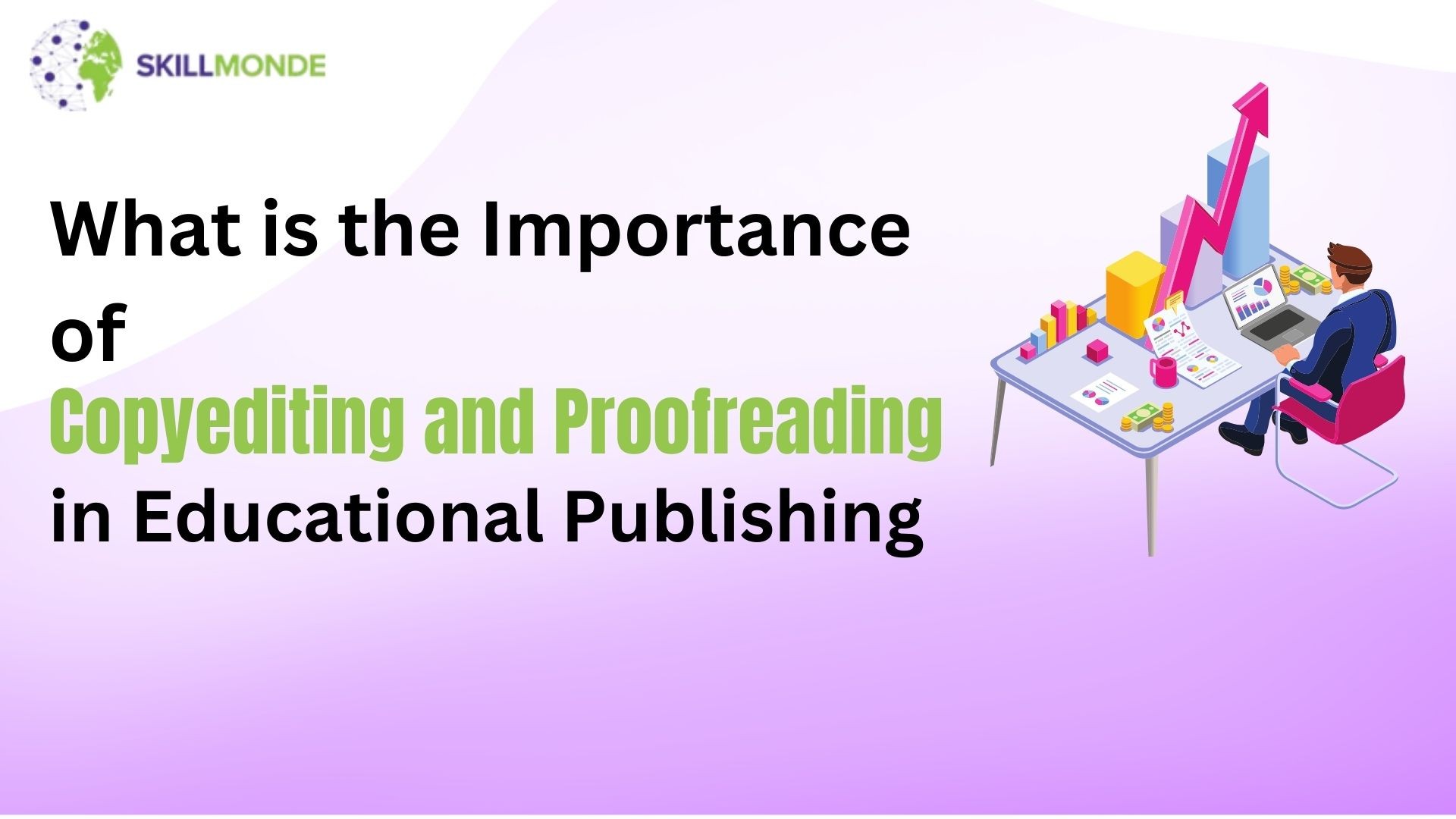Introduction:
In the world of educational publishing, precision, clarity, and accuracy are non-negotiable. Educational materials—whether textbooks, academic journals, or digital content—must be flawless to effectively support learning and teaching. In fact, studies show that 76% of educators and institutions are more likely to adopt educational materials that are professionally edited and proofread.
Copyediting and proofreading are critical steps in the publishing process that ensure your content meets the highest standards of quality and credibility. In this blog, we will explore why these services are essential for educational publishing and how they can elevate the impact of your materials.
What Are Copyediting and Proofreading?
- Copyediting: This involves reviewing the content for grammar, punctuation, style, and consistency. A copyeditor ensures that the text is clear, concise, and coherent, while also adhering to specific guidelines or style manuals (such as APA, MLA, or Chicago).
- Proofreading: The final step before publishing, proofreading involves checking for any remaining errors or typos after the content has been copyedited. It focuses on surface-level corrections, ensuring that the text is error-free and ready for publication.
Both of these services are vital to maintain the quality and credibility of educational materials.
Why Are Copyediting and Proofreading Essential in Educational Publishing?
- Ensuring Accuracy and Credibility In educational publishing, accuracy is paramount. A single factual error or grammatical mistake can undermine the credibility of the entire publication. According to a survey by the Society for Scholarly Publishing, 68% of educators believe that errors in educational content can negatively affect the learning process. Professional copyediting and proofreading eliminate such mistakes, ensuring that your materials are accurate and reliable.
- Improving Clarity and Readability Educational content must be easy to understand for students and educators alike. Copyediting refines the language, improves sentence structure, and ensures logical flow, making complex information easier to digest. Proofreading further enhances readability by eliminating distractions like typos and punctuation errors. This improved clarity helps learners grasp the material more effectively and enhances the overall learning experience.
- Maintaining Consistency Across Materials Consistency in terminology, formatting, and style is crucial in educational publishing. Inconsistent use of terms or formatting can confuse readers and diminish the professional appearance of your materials. Professional copyeditors ensure that your content maintains a consistent voice, style, and format, providing a cohesive learning experience for users.
- Enhancing Accessibility and Inclusivity Copyediting and proofreading also play a significant role in ensuring your content is accessible and inclusive. This involves adapting language and structure to meet diverse learners' needs, including those with disabilities or limited language proficiency. For example, clear, concise language and consistent formatting can improve readability for students with dyslexia, while descriptive alt-text can make content accessible to visually impaired learners.
Real-Life Example: The Impact of Professional Copyediting and Proofreading
A renowned educational publisher, ABC Learning Solutions, was facing issues with declining adoption rates of their textbooks. Feedback from educators revealed that the textbooks contained numerous grammatical errors and inconsistencies, affecting the credibility and readability of the materials. After partnering with a professional copyediting and proofreading service, ABC Learning Solutions saw a 45% increase in textbook adoption rates. This change demonstrated the critical role these services play in maintaining quality and credibility.
How to Choose the Right Copyediting and Proofreading Services for Educational Publishing
- Look for Industry Expertise Choose a service provider with experience in educational publishing. They should understand the unique requirements of academic content and be familiar with the style guides relevant to your discipline.
- Check for Quality Assurance Processes Ensure the provider has a robust quality assurance process, including multiple rounds of editing and proofreading, to guarantee error-free content.
- Evaluate Flexibility and Turnaround Time Look for a provider that can adapt to your specific needs and timelines. Fast and flexible services are particularly valuable when working on tight deadlines.
- Review Testimonials and Case Studies Look for client testimonials and case studies to gauge the provider's track record in delivering high-quality editing and proofreading services.
Elevate Your Educational Content with Professional Editing Services
Copyediting and proofreading are not just optional steps in educational publishing—they are essential to maintaining accuracy, clarity, and credibility. By investing in professional editing services, publishers can enhance the quality of their content, improve adoption rates, and make a greater impact in the educational community.
Ready to ensure your educational materials meet the highest standards of quality? Contact SkillMonde today to learn more about our expert copyediting and proofreading services!
